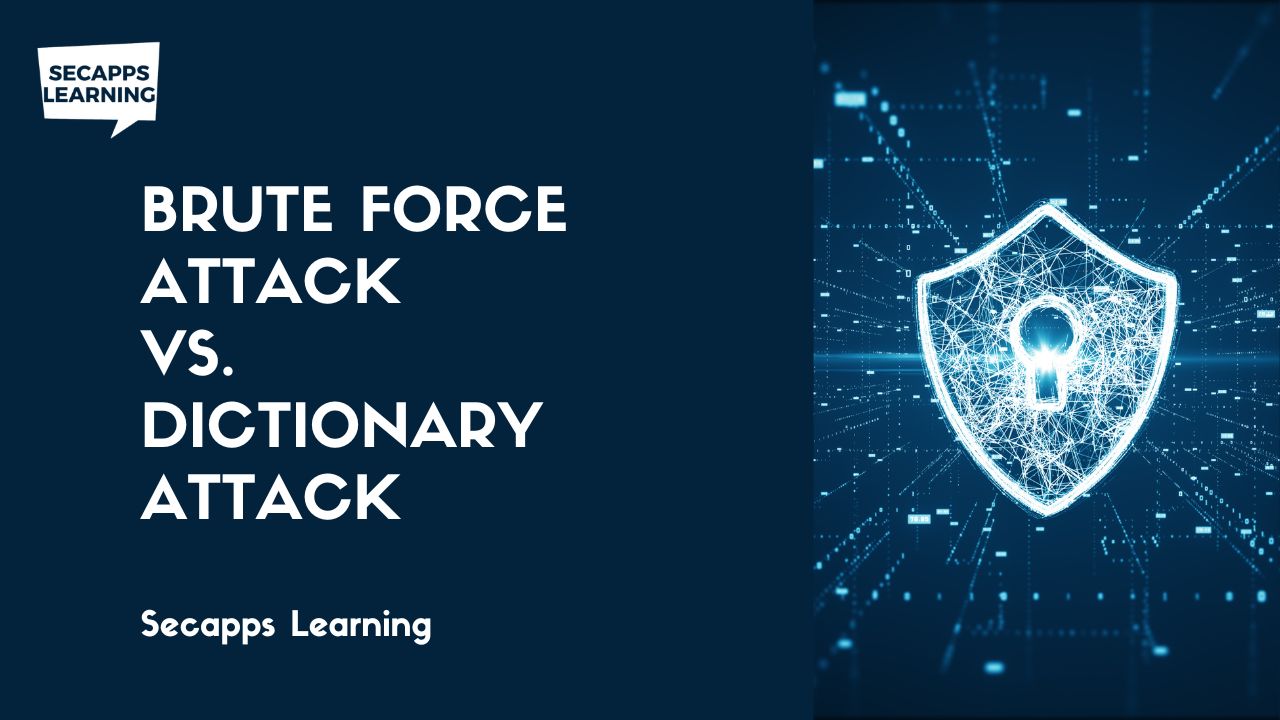
Modern computing infrastructure grows by leaps and bounds every single hour enabling the easy exchange of information and delivery of services across various environments. Simultaneously, systems and networks must remain vigilant against attacks that hackers keep developing to compromise their security. Of the numerous techniques and tactics that hackers use, Brute Force Attack is one.
A brute force attack is a method used by hackers to gain unauthorised access to a system or data by trying all possible combinations of usernames, passwords, or encryption keys until the correct one is found. It systematically tries every possible combination until it succeeds. This approach is resource-intensive and time-consuming but can theoretically crack any password, given enough time and computational power.
A dictionary attack, on the other hand, is a type of brute force attack. Instead of trying every possible combination, a dictionary attack uses a predefined list of words or phrases, known as a dictionary, to attempt to gain unauthorised access. This approach is more targeted and efficient than a traditional brute force attack, as it leverages common passwords, phrases, or variations thereof. Dictionary attacks are particularly effective against weak or commonly used passwords.
Brute force attacks are more resource-intensive but can theoretically crack any password, while dictionary attacks are faster but rely on the predictability of human-generated passwords. Both attacks have their strengths and weaknesses, and effective security measures should be implemented to mitigate the risk of both types of attacks. In summary, brute force attacks try every possible combination of characters, while dictionary attacks use a predefined list of words or phrases. Determining which attack is more effective, a brute force attack or a dictionary attack depends on several factors, including the complexity of the password, the computational resources available to the attacker, and the effectiveness of the security measures in place.
Here's a simple check to assess the effectiveness of the two:
Brute Force Attack: Effective against any password, regardless of complexity, given enough time and computational power.
Dictionary Attack: Highly effective against weak or commonly used passwords, but less effective against complex or unique passwords.
Brute Force Attack: Requires significant computational resources, especially for longer and more complex passwords.
Dictionary Attack: Generally, this requires fewer computational resources compared to brute force attacks, as it relies on a predefined list of words or phrases.
Brute Force Attack: The time required depends on the length and complexity of the password. Longer and more complex passwords increase the time exponentially.
Dictionary Attack: This is generally faster, especially if the target's password is weak or commonly used. However, it can still be time-consuming against strong and unique passwords.
Brute Force Attack: This can be thwarted by security measures such as account lockout policies, rate limiting, and CAPTCHA mechanisms.
Dictionary Attack: Similarly, security measures such as password complexity requirements, account lockout policies, and rate limiting can mitigate the risk of successful dictionary attacks.
In practice, the effectiveness of each attack varies depending on the specific scenario. For example, a dictionary attack may be more effective against a system with many users using weak or common passwords, while a brute force attack may be more effective against a system with fewer users but with longer and more complex passwords. To enhance security, it's important to implement a combination of measures involving technical controls, best practices, and user education that make both brute force and dictionary attacks more difficult.
Here are some strategies to prevent brute force attack and dictionary attack:
- Implement multi-factor authentication to add an additional layer of security beyond passwords. MFA requires users to provide two or more forms of verification before granting access, such as a password combined with a one-time code sent to a mobile device or generated by an authenticator app.
Implement account lockout policies that temporarily lock user accounts after a certain number of failed login attempts. This helps prevent brute force attacks by thwarting repeated login attempts using automated tools.
Certified Ethical Hacker (CEH) Online Training from Industry Experts
Implement rate-limiting mechanisms to restrict the number of login attempts allowed within a certain time period. This helps prevent both brute force and dictionary attacks by limiting the rate at which attackers can try different passwords.
Use CAPTCHA (Completely Automated Public Turing test to tell Computers and Humans Apart) or other human verification mechanisms on login pages to differentiate between legitimate users and automated bots. CAPTCHA challenges can help prevent automated brute force attacks.
Keep software, operating systems, and applications up-to-date with the latest security patches and updates. Many brute force and dictionary attacks exploit known vulnerabilities that have been patched by software vendors.
Deploy web application firewalls to protect web applications from SQL injection, cross-site scripting, and other common attack vectors that can be used in brute force or dictionary attacks.
By implementing security measures and best practices, organisations can significantly reduce the risk of successful brute force and dictionary attacks, safeguarding their systems and data against unauthorised access and compromise.
Also read: The Ultimate Guide to CyberArk and SailPoint Integration
Your email address will not be published. Required fields are marked*
Copyright 2022 SecApps Learning. All Right Reserved
Comments ()